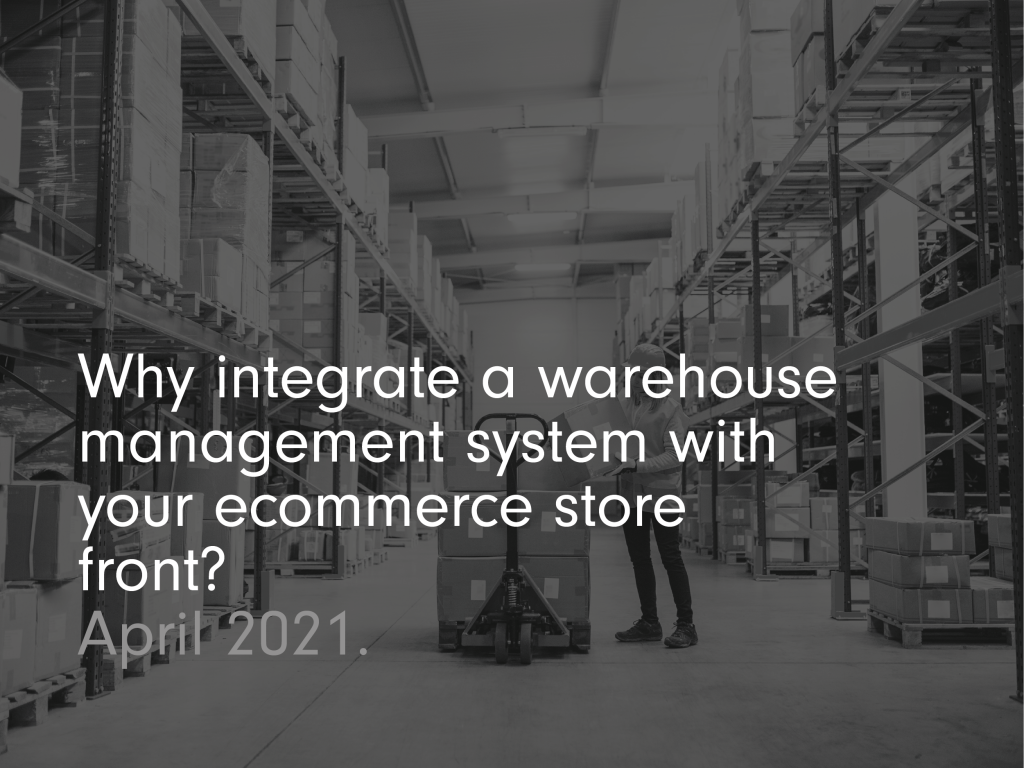Why integrate a warehouse management system with your ecommerce store front?
Ecommerce provides an additional and important revenue stream. This was evident during the pandemic, where ecommerce became the key to success for many companies. Those who had been without web stores in 2020 saw the benefits and rapidly pivoted so that they could provide online sales.
But having an efficient ecommerce website is only half the story. Integrating it with your warehouse to ensure effective management of your supply chain is fundamental. Integration facilitates a streamlined, end-to-end solution that eliminates complexity and ensures your customers the best levels of service.
Here’s how integrating your ecommerce storefront with a warehouse management system (WMS) can benefit your business.

Be adaptable to multiple order types.
While traditional wholesale and retail was largely concerned with bulk orders or multiple line ordering, ecommerce is characterised by the large percentage of orders that are for single items only, or for a handful of single quantity SKUs.
So, these days, more online distributors are finding that their order make-up is rather involved. It might comprise bulk provision to suppliers, along with single or small quantity item orders to a large number of customers, or even involve drop-shipping or marketplace sales. Catering for complexity like this necessitates a robust WMS solution that can give the level of adaptability needed to optimise warehouse operations so you can accommodate a mix of orders.
Manage demand fluctuation.
Ecommerce can come with seasonality, meaning surges in sales at certain times – especially for companies providing consumer goods. Sales may spike before Christmas, or before other celebrations, like Halloween. Then there may be the special offer periods, like Black Friday to contend with. Potential lockdowns in the future may also affect demand.
A WMS can help you to confidently manage this by equipping your warehouse in readiness for sales fluctuations. It can scale so that you can handle any volume of orders, and also includes functionality for demand forecasting and analysis.
Take advantage of the rise of marketplaces.
Marketplaces like Amazon, Wayfair and eBay are becoming increasingly popular. Consumers realise it is often more convenient to shop for many products in one outlet, rather than to visit several different online retailers. It’s much like the rise of department stores in the later part of the 19th Century: buyers preferred the ease of shopping in one location to having to visit separate specialist shops.
If you are finding it hard to attract enough visitors to your own ecommerce website to achieve the level of sales you want, then using the popularity, reach and marketing exposure of these sites can help you drive that growth. Having a WMS that can integrate to both your website and to a variety of marketplaces helps automate processes and simplifies everyday warehouse activities like picking, packing and order fulfilment.
Manage more complex buyer behaviour.
Selling online is a tricky business. Buyers are not able to see or touch the goods they are buying, so returns are more prevalent. In fact, while 8% of in-store purchases are returned, this rises to around 25% of online sales. Some buyers will even enter into a purchase with the aim of buying several different items – in the full knowledge that they will return one or more of them.
Store closures and the pandemic have forced more people online. Many of these are new to ecommerce and have bought alternatives to their usual products or tried new brands. This marks a shift in consumer loyalty that has customers shopping around for the lowest price or the fastest delivery.
To meet these evolutions in the buying relationship, you have to adapt. You need to deploy a slick and acceptable returns process, be able to access real-time order and stock information, and see insightful data about your buyers.
Why not stay updated on LinkedIn?